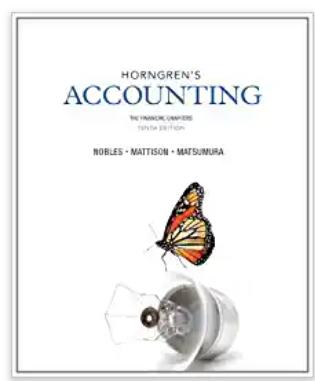Question
Consider each part below independently. Ignore income taxes. 1. Preston Company's required rate of return is 14% on all investments. The company can purchase a
Consider each part below independently. Ignore income taxes.
1. Preston Company's required rate of return is 14% on all investments. The company can purchase a new machine at a cost of $84,900. The new machine would generate cash inflows of $15,000 per year and have a 12-year useful life with no salvage value. Compute the machine's net present value. (Use the format shown in Exhibit 14-1.) Is the machine an acceptable investment? Explain.
2. The Walton Daily News is investigating the purchase of a new auxiliary press that has a projected life of 18 years. It is estimated that the new press will save $30,000 per year in cash operating costs. If the new press costs $217,500, what is its internal rate of return? Is the press an acceptable investment if the company's required rate of return is 16%? Explain. 3. Refer to the data above for the Walton Daily News. How much would the annual cash inflows (cost savings) have to be for the new press to provide the required 16% rate of return? Round your answer to the nearest whole dollar
Model X100 sells for $120 per unit whereas Model X200 offers advanced features and sells for $500 per unit. Management expects to sell 50,000 units of Model X100 and 5,000 units of Model X200 next year. The direct material cost per unit is $50 for Model X100 and $220 for Model X200. The company's total manufacturing overhead for the year is expected to be $1,995,000. A unit of Model X100 requires 2 direct labor-hours and a unit of Model X200 requires 5 direct labor-hours. The direct labor wage rate is $20 per hour.
Required:
1. The company currently applies manufacturing overhead to products using direct labor-hours as the allocation base. Using this traditional approach, compute the product margins for X100 and X200.
2. Management is considering an activity-based costing system and would like to know what impact this would have on product costs. Preliminary analysis suggests that under activity-based costing, a total of $1,000,000 in manufacturing overhead cost would be assigned to Model X100 and a total of $600,000 would be assigned to Model X200. In addition, a total of $150,000 in nonmanufacturing overhead would be applied to Model X100 and a total of $350,000 would be applied to Model X200. Using the activity-based costing approach, compute the product margins for X100 and X200.
3. Explain why the product margins computed in requirement (1) differ from those computed in requirement (2).
Step by Step Solution
There are 3 Steps involved in it
Step: 1

Get Instant Access to Expert-Tailored Solutions
See step-by-step solutions with expert insights and AI powered tools for academic success
Step: 2

Step: 3

Ace Your Homework with AI
Get the answers you need in no time with our AI-driven, step-by-step assistance
Get Started


